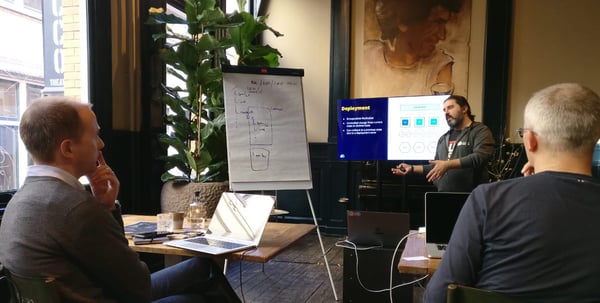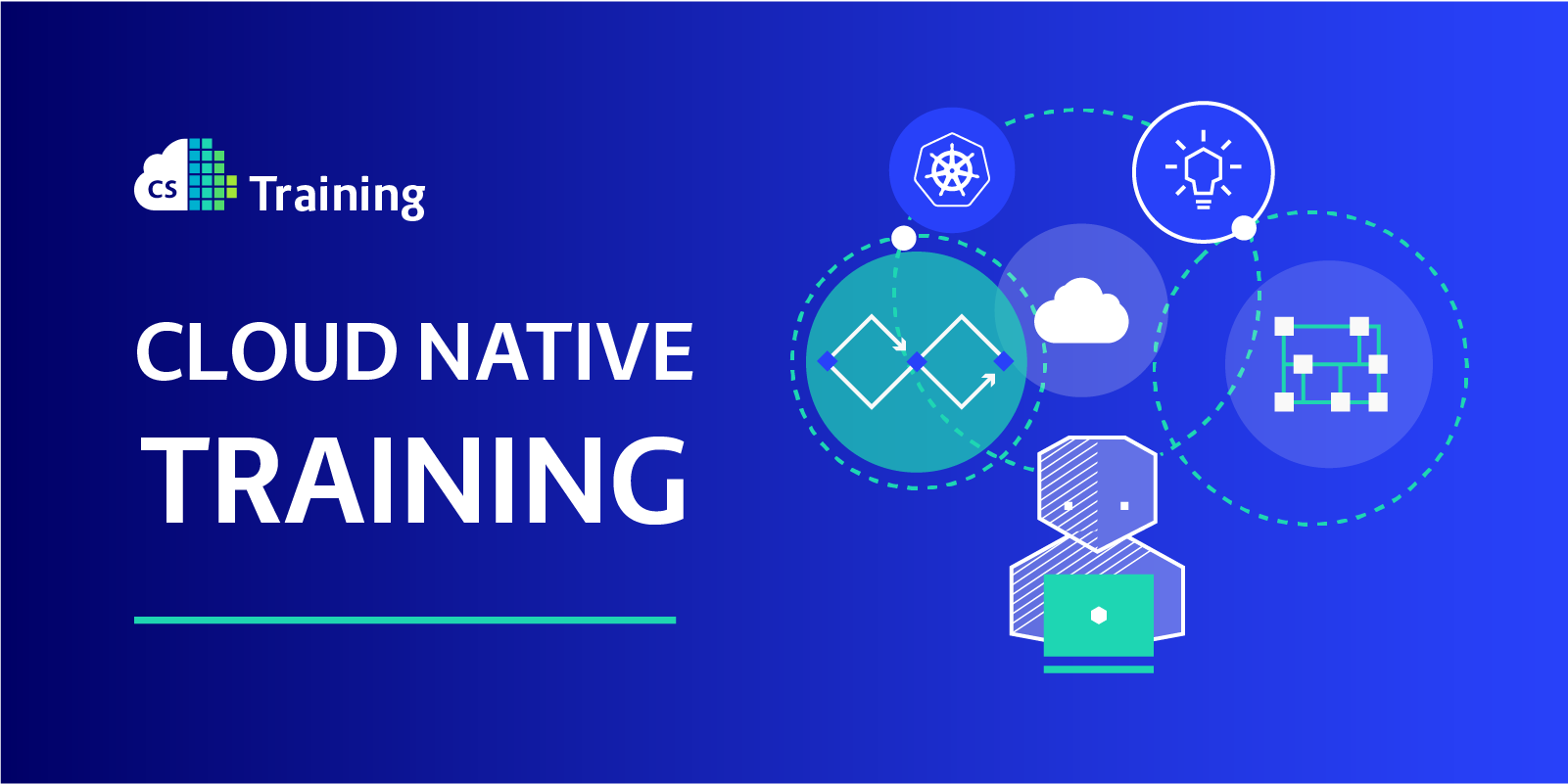For anyone that has been engaged in the big trend towards the containerisation of software applications, and the move to elastic, on-demand infrastructure, you'll know how important getting skilled up in the technology is. It's not just Docker and Kubernetes that needs mastering; there's a whole 'landscape' of tech that needs to be mastered in order to successfully run production-grade containerised workloads.
Most of these technologies are open source, which means that a wealth of information is readily available for acquiring the skills; tutorials can be found online in blogs, videos, and more.
For many, though, workshops delivered by experts is the preferred format. It provides a two-way channel between novice and someone more experienced—someone who’s been there, done that, and carries the scars to prove it. The shared experience of training also helps teams start from the same baseline of knowledge and vocabulary.

Cloud Native ≠ Technology
So, why, in spite of becoming technically savvy, do a lot of Cloud Native initiatives flounder, and often fail? The answer to that question is complex and multi-faceted, but at its heart is the whole nature of 'Cloud Native' itself.
What exactly is 'Cloud Native', and what are we trying to achieve when we adopt a 'Cloud Native' approach? A Cloud Native approach is about transforming the very nature of a business; the way that it plans its direction, the way that it operates on a day-to-day basis, the culture that describes its employee's shared values and beliefs, and of course the technology it uses to deliver its value proposition. Transformation, but for what purpose?
Businesses need to be competitive in their chosen markets, and to be competitive they need the ability to swiftly adapt and change. This has never been truer than it is now. Without that ability, businesses ultimately stagnate and succumb to their more enlightened competition. The goal of Cloud Native adoption should be to provide value to your stakeholders through the regular, expeditious delivery of enhancements and features to the software that is core to your business' success.
Cloud Native technology, then, is an essential ingredient in a Cloud Native approach, but it's just one part of the jigsaw puzzle. A successful Cloud Native strategy also involves the people inside your organisation, and the processes they undertake to deliver the product or services that characterise your business.
The Cloud Native Journey
If Cloud Native adoption involves the entire organisation, then, how do we get everybody involved?
It's easy to see how a project initiated at board level might be allocated the resources and political capital necessary for success. But, CEOs are generally too busy managing their business to be aware of technology-oriented paradigms such as the Cloud Native approach.
Often, the opportunity is perceived by those in the middle of the organisation, who have a grasp of the technology, and how it might be brought to bear to help transform the organisation for the better. Their challenge is how to sell the approach and the potential benefits to the rest of the organisation. So, where do you start?
A good place to start is with the organisation’s engineers. More often than not, engineers are all too keen to adopt the latest, shiny new technologies; it keeps them relevant, marketable, and enthused. And, happy, motivated employees are an essential ingredient in the success of a Cloud Native journey.
At the beginning of the journey, this might all appear very daunting. This is especially true if you're facing a battle to convince your colleagues of the value in conducting such an initiative. Why fix something that isn't broken? We've done it this way for years!
It would be so much easier if your organisation shared a common purpose. And this is where we return to the subject of education—Cloud Native education isn't just for engineers.
Education for All!
Having helped a number of different companies progress along their Cloud Native journey, Container Solutions believe in Cloud Native training for all. Yes, it's important for engineers to learn about containers, orchestration, and service meshes. But it's equally important for non-technical staff to understand the nature of Cloud Native, how it will benefit their organisation, and what part they have to play on the journey ahead. This includes management teams, right up to the executive level.
You can't imbue an organisation with a new culture on demand; it requires changing hearts and minds, through collaboration, communication, and being inclusive. The more people feel involved in the transformation, the more likely they are to share a common belief in the direction of travel.
To help our customers achieve this difficult task of cultural change, we provide different learning paths to suit different audiences inside an organisation. Everyone gets a Cloud Native 101 training, which aims to inform on the nature of the Cloud Native approach, the benefits it provides, and the steps needed to advance to maturity. It provides an organisation with a shared vision and vocabulary that is essential for success.
From here we'll typically split the learning paths into separate engineering and executive tracks. Engineers will benefit from technical training, which covers cloud infrastructure, configuration management, continuous integration and deployment, and more. Executive teams will learn about the Agile approach, and Cloud Native leadership techniques, amongst other things. Where possible we bring the different streams together to work on a shared problem in a guided hackathon.
A Case Study
One of our customers that has embraced this educational approach is Eckoh, a software company that specialises in payment processing and contact-centre solutions. At the start of its Cloud Native journey, we conducted a workshop to determine how we would work together to advance the company’s adoption of Cloud Native.
We spent three days working with people from different parts of the organisation, discussing culture, process and potential technical solutions. This valuable workshop was a precursor to subsequent training for the majority of Eckoh’s employees, from engineers up to the CFO and CEO.
The guidance of Container Solutions’ training helped Eckoh to overcome the inertia associated with starting such a big initiative, provided its people with a clear vision of where the company was headed, and inspired confidence in the organisational transformation that is taking place within the company. Equally as important, it cemented the relationship between Eckoh and Container Solutions, and engendered a feeling of trust between both parties.
Conclusion
There's no getting away from the fact that Cloud Native transformations are tricky to navigate. But the chances of success are considerably improved by including everyone in the journey, and 'education for all' is a great strategy for achieving this.
Those in the organisation who participate end up becoming ambassadors for the initiative. Their natural enthusiasm for success becomes infectious, and helps to inspire those who are less amenable to change.



 Previous article
Previous article
